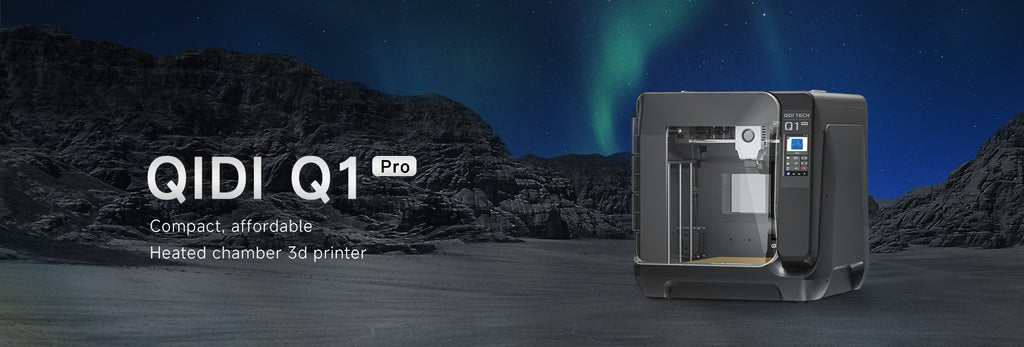Unleash Your Creativity: Discover the Perfect Beginner 3D Printers for 2024!
In recent years, 3D printing has transformed from a niche technological marvel into a mainstream hobby, capturing the imagination of creators, makers, and everyday individuals alike. As more people are discovering the endless possibilities of turning digital designs into tangible objects, the market for 3D printers has exploded. However, with so many options available, choosing the right 3D printer can be daunting, especially for beginners. In 2024, it’s essential for new users to select a model that not only meets their creative aspirations but also simplifies the learning process. This article aims to guide you through the exciting world of 3D printing, highlighting the top-rated printers ideal for newcomers.

Understanding 3D Printing Basics
At its core, 3D printing is a manufacturing process that creates three-dimensional objects from digital files, typically through additive methods. This involves layering materials, such as plastic or resin, one thin layer at a time until the desired shape is achieved. There are various types of 3D printers, including Fused Deposition Modeling (FDM), Stereolithography (SLA), and Selective Laser Sintering (SLS), each with unique characteristics and applications. For beginners, FDM printers are often recommended due to their user-friendly nature, affordability, and versatility. Understanding these fundamentals is crucial for new users, as it lays the groundwork for making informed decisions about which printer to purchase and how to effectively utilize it in their creative projects.
Key Features to Look for in a Beginner 3D Printer
When selecting a 3D printer, beginners should consider several essential features. Firstly, ease of use is paramount; look for printers that come with intuitive interfaces, clear instructions, and straightforward setup processes. Safety features, such as enclosed build chambers and automatic shut-off mechanisms, are also important to prevent accidents, especially if children are involved. Additionally, robust customer support and a vibrant online community can provide invaluable resources for troubleshooting and advice. Finally, consider printers that offer a wide range of compatible materials, allowing for flexibility in creating various projects. By focusing on these features, beginners can ensure they choose a 3D printer that will foster a positive and enjoyable entry into the world of 3D printing.
Top Rated 3D Printers for New Users in 2024
As we delve into the top-rated 3D printers for new users in 2024, several models stand out for their user-friendliness and reliability. One popular choice is a compact printer that boasts a straightforward setup process and an automatic bed leveling feature, which takes the guesswork out of achieving a perfect first print. Another model is known for its exceptional print quality and a large build volume, making it perfect for users looking to create larger projects or intricate designs. Additionally, a versatile printer that supports both FDM and resin printing options offers newcomers the flexibility to experiment with different materials and techniques. Features like built-in Wi-Fi connectivity and mobile app control can also enhance the user experience, allowing users to monitor and manage their prints remotely. Finally, a model that emphasizes safety with an enclosed design and minimal noise output can be a great option for home use, ensuring peace of mind while printing.
Comparative Overview
When comparing these printers, consider aspects such as build volume, print speed, and overall user-friendliness. For instance, while some models may offer larger print areas, others excel in rapid print speeds, allowing for quicker project completion. User-friendliness can vary significantly, so it’s essential to assess how intuitive the controls are and whether the printer provides clear guidance for beginners. By evaluating these factors, new users can better determine which printer aligns with their creative goals and requirements.
Getting Started with 3D Printing
Once you've chosen your 3D printer, the next step is to set it up for successful printing. Begin by carefully following the manufacturer's instructions for assembly and installation. Download any necessary software required to prepare your designs for printing, ensuring you familiarize yourself with its features and functions. During the initial setup, calibration is crucial; take the time to level the print bed and adjust the settings according to the material you'll be using. As you embark on your first print, start with simple designs to build your confidence and understanding of the process. Experimenting with different settings and materials will help you learn how to optimize your prints, leading to increasingly complex and satisfying projects.
Summary of 3D Printing for Beginners
In summary, the world of 3D printing offers exciting possibilities for creativity and innovation, especially for beginners in 2024. By understanding the basics of 3D printing technology, identifying key features to look for in a printer, and exploring some of the top-rated models available, you can make an informed decision that enhances your creative journey. Remember, the right 3D printer can serve as a gateway to endless possibilities, so take your time to choose wisely. Embrace the adventure of 3D printing, and unleash your creativity today!



